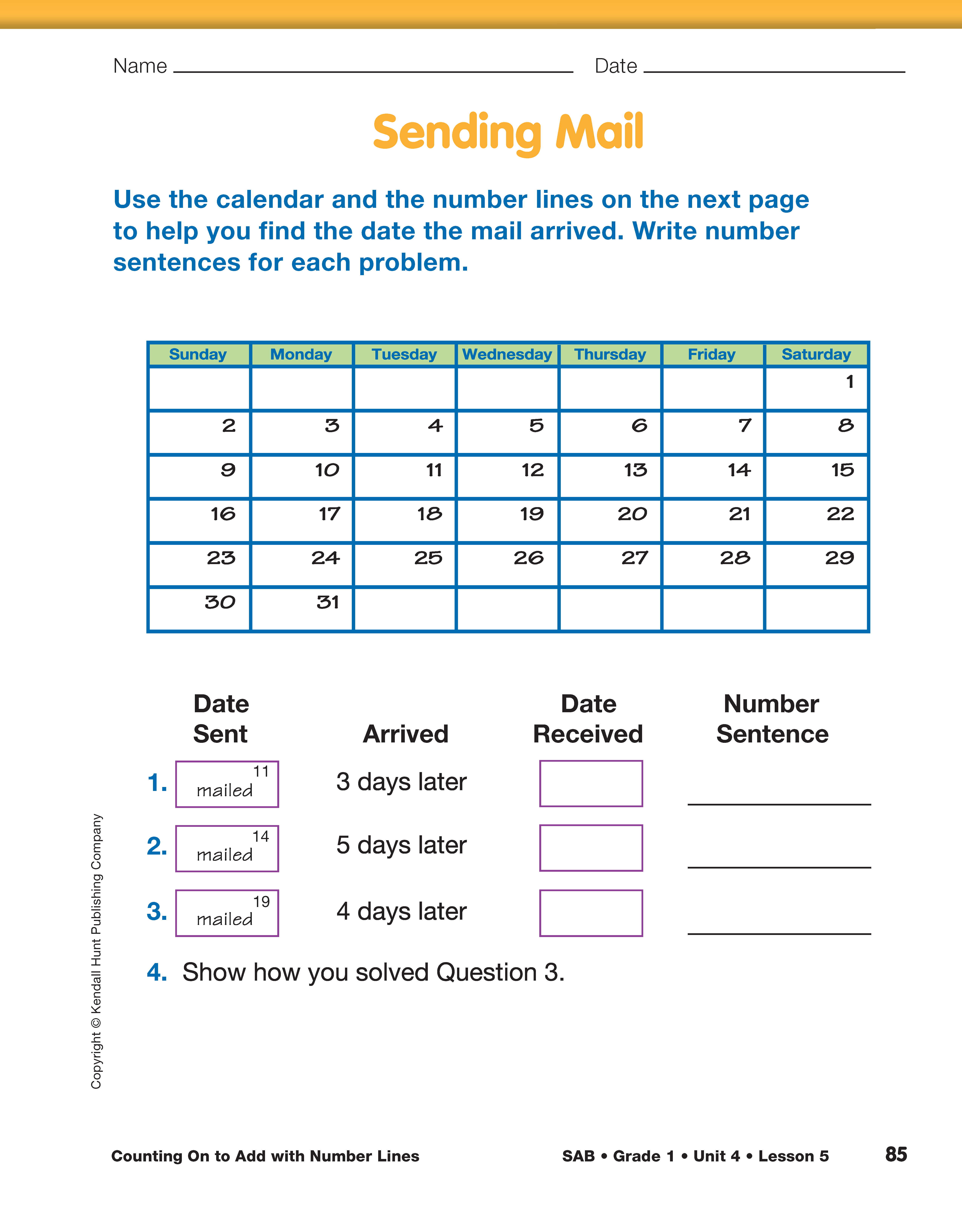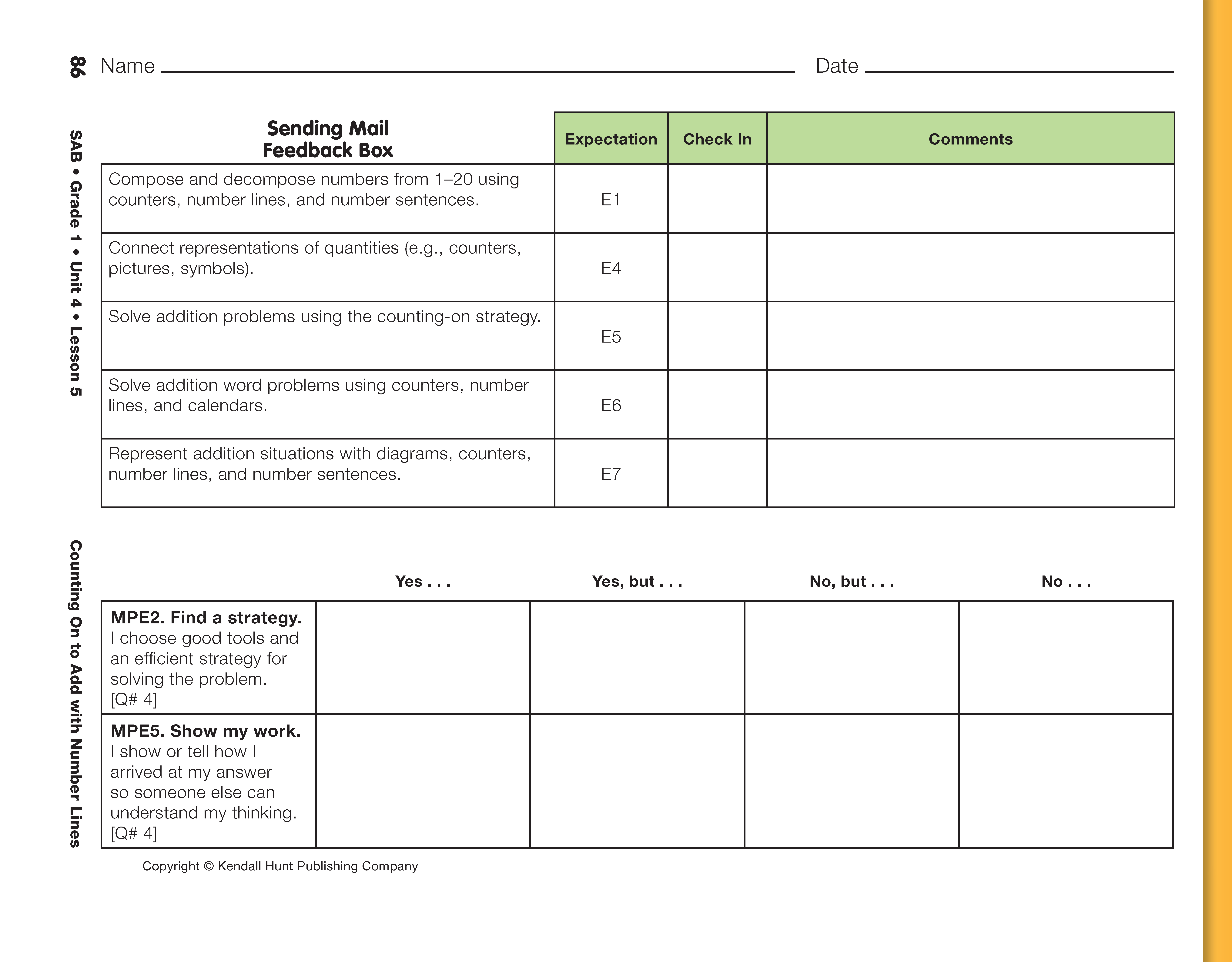Display and refer students to the Math Practices
page in the Student Activity Book Reference section.
Direct students to Math Practices Expectation 2,
Find a strategy. Tell students that you have chosen
some students to explain how they used good tools
to solve a problem. Students should listen to see if
they are able to understand their classmates' thinking
as they share their solution strategies [MPE5]. Ask
the identified students to demonstrate and explain
their solution strategy for a problem on the It's in the
Mail pages.
- [Student name] show how you solved this problem
using a number line.
- [Student name] show how you can check the
problem using the calendar.
- Did they get the same answer?
- What is the number sentence for this problem?
- How is counting on with the number line the same
as counting on with a calendar? (Both list numbers
in order; both tools work to solve problems.)
- How is it different from counting on with a calendar?
(Possible responses: The range of numbers
is different: the calendar goes to 31, a desk number
line goes to 40, the number line in the
Reference section goes to 30, and the classroom
number line goes to 130. The calendar starts with
1 and the number lines start with 0. The numbers
continue in order in a line on the number line, but
on the calendar you move from the end of one
row to the beginning of the next row to count.)
- Why is it helpful to know how to solve a problem
in more than one way, with different tools?)
(Responses will vary. Possible responses: You
can choose the tool that helps you solve the problem
the best way. You can choose the tool that
you like best. You can do the problem one way
and then solve it another way to check.
- Which tool is better to use with higher numbers,
the number line or the calendar? Why? (the number
line because the calendar only goes to 31)
- Which tool do you like to use the best, the number
line or the calendar? Why?
Assign Sending Mail to students to complete individually.
Have small counters and connecting cubes
available for students to use if they choose.
Use the Sending Mail pages with the Feedback Box in the Student Activity Book to assess
students' progress toward composing and decomposing
numbers [E1]; solving addition problems using the counting-on
strategy with calendars and number lines [E5, E6];
representing addition problems with calendars, number lines,
and number sentences [E7]; and making connections between
those representations [E4].
Sending Mail can also be used to assess students' abilities to
choose good tools to solve problems [MPE2] and show work
[MPE5].















